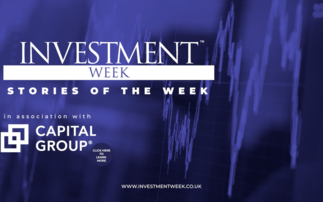Industry Voice: If 2017 saw one of the more benign market environments in decades, 2018 is already proving to have a bit more bite. This heralds the return of alternative or less directional trading, according to Steve Waddington, multi-asset manager at Insight.
In 2017, the global economy transitioned from a period of sluggish, US dominated growth, to a more synchronised global recovery. With inflation still well behaved, corporate earnings grew strongly, buoying both equity and credit markets and suppressing volatility, which reached historically low levels.
Half-way through 2018, the year has proved more challenging for investors. Volatility spiked in the first quarter, driven by the unwinding of US volatility products and then compounded by an increase in global trade tensions and profit taking in US technology stocks. Underlying this, however, was a change in the outlook for global growth.
The global economy is evolving, shifting from a period of growth acceleration to one in which growth is moderating (albeit from elevated levels), a change which historically has been characterised by more modest returns for investors.
Unanticipated volatility spikes generally hurt in the near term, but they can also offer opportunities. Although generally short lived, the fear of loss among investors drives risk appetite downwards and derivatives markets become dominated by those looking to hedge against downside risk. As a result, risk premia in option pricing can become elevated and this can create greater opportunity for alternative, option based strategies.
We believe it is important investors are able to access a broad opportunity set during such times, to give them flexibility over time to access traditional risk assets, as well as a range of alternative strategies, which are generally less correlated with broad asset class returns.
Generally, we tend to observe that challenging environments for traditional market directional strategies (generally characterised by higher volatility) tend to be more rewarding for strategies exploiting alternative sources of return and vice versa. Having access to both, can extend the potential for diversification and may provide more consistent return generation over a typical economic or market cycle.
Range rovers
Using options, it is possible to pursue range-bound strategies, where the investor expects an index or currency to trade within a range over a specific period of time, perhaps as a period of consolidation following a directional move. The investor can sell a call and a put option on either side of the range, collecting the premium if the asset trades within the range to expiry. A volatility spike increases the implied volatility embedded in option prices, effectively broadening the range at which a strategy can be implemented for the same premium.
Another strategy looks at ‘Skew' - the amount people are prepared to pay to protect against market falls. During the Q1 volatility spike, the skew for markets such as the S&P 500 spiked to levels normally seen during major events such as the global financial crisis or European sovereign debt crisis. This creates the opportunity for upside breakout strategies, financing the purchase of a call option which gives exposure to a market recovery via the sale of a put option. When skew is elevated, put options trade at a significant premium to call options, allowing the creation of strategies which can benefit if risk appetite returns, but should require considerable further falls before they generate losses.
More complex strategies can take advantage of the term structure within option pricing and skew. For option prices, longer-dated implied volatility is normally higher than near-dated, reflecting the greater uncertainty further out (term structure). During the Q1 volatility spike the term structure for the S&P 500 inverted, an event which occurs very infrequently.
Heightened volatility can open the door to alternative strategies that either offer a high degree of asymmetry in their pay-off profiles or wide buffers of protection should further weakness persist.
The value of investments can fall. Investors may not get back the amount invested.
For Professional Clients only. This is a financial promotion and is not investment advice. Any views and opinions are those of the interviewee, unless otherwise noted. For further information visit the BNY Mellon Investment Management website. INV01294 Exp 9 Nov 2018.











